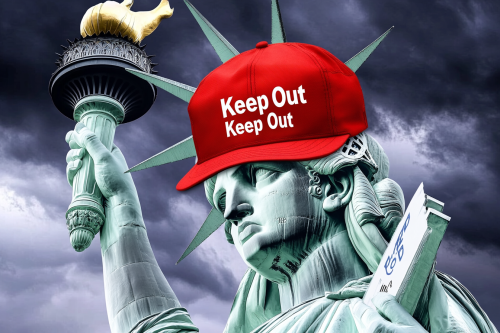US employers are spending over three times more on foreign workers on US visas such as the L1 and H1B visa than they are on American labor, and it’s taking recruiters up to six times longer to add overseas labor to the workforce compared with hiring a native worker, according to the results of the 2016 Employer Immigration Metrics Survey. Employment based “Green Cards” typically take even longer to obtain.
It is an expensive and difficult process employing foreign workers on visas such as the L1A intra-company transfer visa for executives and managers and the L1B visa for specialized knowledge workers. Because of the annual 85,000 quota it is even more expensive and difficult to obtain work visas under the H1B visa scheme. E2 Treaty Investor Visas and E1 Treaty Trader visas are only available to certain nationalities. E3 visas are only available to Australians. EB2 employment based immigrant visas and EB3 employment based immigrant visas also known as “Green Cards” are both difficult to obtain and can take years in processing time.
A report documenting the findings of the survey, carried out by the Council for Global Immigration (CFGI), the Society for Human Resource Management (SHRM) and an international law firm, was published on February 27, 2017.
It concluded that US firms looking to hire foreign labor are faced with a complex and challenging employment-based immigration system. Three-quarters of the 239 survey participants, with at least 2,500 employees, said that acquiring US work visas for foreign personnel such as the L1 and H1B visa within a reasonable timeframe was ‘crucial’ to meeting business goals.
CFGI executive director, Lyn Shotwell, stated that employment-based immigration takes meticulous planning and is not something that should be treated as a minor addition to the hiring process. She said: “Hiring foreign nationals takes time, is often expensive, and requires a major investment of time from staff in human resources, legal and global mobility offices.”
Without US Visa takes 42 days to fill a professional position
SHRM research estimates that it takes 42 days to fill a professional job vacancy from the time that an employer posts a position, until the moment that a candidate accepts an offer. However, factor in the requirement for a US work visa, which involves preparing the necessary documentation for an employee and then applying for a visa, and then suddenly the hiring process faces considerable delays.
According to the CFGI, the overall process for hiring personnel via the US immigration system can be as much as six times longer when compared with standard recruitment protocols.
The report shows that US firms face a multitude of challenges when sponsoring overseas personnel for temporary US work visas, such as the H1B, L1 and permanent EB employment based immigrant visas. Hold ups can occur as a result of lengthy processing, limited visa availability and disagreements over salary.
The 2016 Employer Immigration Metrics Survey quotes that ‘it takes an average of 120 days to have a labor certification application processed at the Department of Labor (DOL) for foreign workers sponsored for green cards. After getting the labor certification approval, employers must then submit a petition for processing to US Citizenship and Immigration Services (USCIS), which takes on average a further 120 days for most workers.’
US Employers dissatisfied with US business visa system
An article published by SHRM reports that the average overall hiring time for a first-time H1B professional is 275 days. Meanwhile, CFGI research encountered numerous examples of employer discontent with the US business immigration system, including:
- Just 30% of respondents stating that DOL processing times were satisfactory.
- Only 24% agreeing that USCIS processing times were reasonable. This stems from the H1B extension processing time, which can often hit the 240-day mark and jeopardizing the work authorization of an employee.
- 23% of respondents of participants agreeing that the DOL prevailing wage determinations were consistent.
- Only 28% stated that prevailing wage decisions were accurate.
- 35% of respondents, whose organizations are subject to the H1B annual cap of 85,000, stated that they had suffered the loss of key, high-potential employees due to visas being unavailable under the cap.
- Just 39 percent agreed that USCIS decisions were consistent from case to case.
- Only 23 percent of respondents agreed that USCIS requests for evidence (RFE) generally ask for necessary information that has not been provided in the initial petition. Additional information requested via an RFE can happen a lot.
RFEs add lengthy delays to the process of hiring a foreign worker, and RFE rates for H-1B and L-1 visas range from 23 percent to 55 percent of cases filed, depending on the visa category and the service center where the cases are processed.
Aside from individual employees, US employers also have to factor in whether they will need to relocate an employee’s dependents. This means further visa filings, plus additional fees for acquiring green cards or other types of visa such as the L2 or H4 visa.
Recruiting overseas workers on US visas is expensive
According to the report, those employers who participated in the survey had, on average, three employees working on a full-time basis and 10 on a part-time basis just to handle company immigration processes. Generally organizations (74%) position these staff within their human resources department.
Besides the cost of recruiting in-house staff, employers are subjected to government fees. First-time H1Bs can typically cost anywhere between $3,460 and $11,675 in US immigration filing fees, plus legal costs. That’s in addition to the $3,424 average cost to hire a US worker, according to the survey.
Workpermit.com can help with E1, E2, L1, H1B, B1 in lieu of H1B, B1 Business Visit Visas, E3 Visas and other types of US Visas
For more information, or to find out if you are eligible for an US work visa, contact WorkPermit.com on 0344 991 9222.




